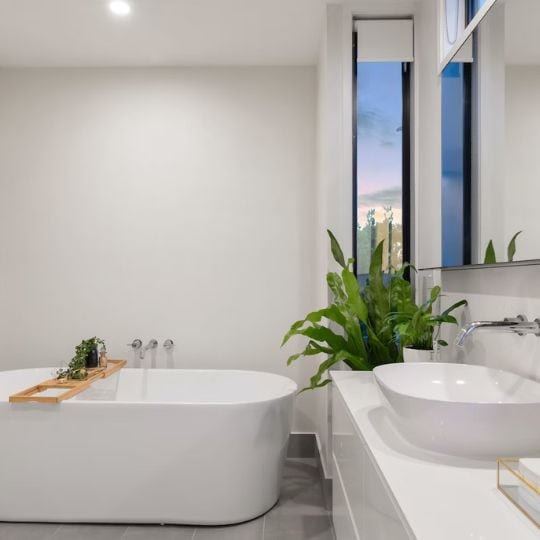When it comes to designing a home, the bathroom often takes a backseat to other rooms like the kitchen or living room. However, overlooking the importance of a well-planned bathroom design can have significant consequences, especially for family homes. In this blog post, we will explore why well-planned bathroom design matters and how it can greatly enhance the functionality, safety, and overall enjoyment of the space for every family member.
Creating a Functional and Efficient Space
One of the primary considerations when designing a family bathroom is to create a functional and efficient space. This involves carefully assessing the needs and dynamics of the family. For example, if you have young children, incorporating features like a lower sink and toilet can promote independence and make it easier for them to use the bathroom on their own. Additionally, a proper layout and organization can help accommodate multiple users at the same time, reducing morning rush hour conflicts.
Maximizing storage and accessibility is another essential aspect of creating a functional bathroom. Ample storage solutions, such as cabinets and shelves, can help keep the space organized and minimize clutter. Accessibility features like grab bars, non-slip flooring, and properly positioned towel bars can also make the bathroom safer and more convenient for family members of all ages.
Incorporating Style and Personality
While functionality and safety are paramount, it’s equally important to create a bathroom that reflects the style and personality of the family. Balancing aesthetics with functionality can be achieved through the creative use of colors, patterns, and textures. For instance, adding a vibrant accent wall, incorporating decorative tiles, or choosing unique fixtures can inject personality into the space without compromising its functionality.
Personalization is another key aspect of designing a family bathroom. Each family member should feel comfortable and have their needs met in the space. Including features like adjustable mirrors and vanity heights, designated storage compartments, and even personalized towel hooks can go a long way in making the bathroom feel like a personalized retreat for everyone.
Picket tiles are another excellent option for incorporating style and personality into your space. You can achieve something different with picket tiles, as their captivating shapes and customizable options allow you to add a little funkiness and personalization to any room. Whether they are used as a kitchen backsplash, a bathroom accent, or even as a focal point on an entire wall, picket tiles can make a bold statement and bring character to your design. With interlocking shapes and modern aesthetics, picket tiles provide a modern twist on a classic look, allowing you to create a space that is truly one-of-a-kind.
Safety and Accessibility for All Ages
One of the most crucial factors to consider when designing a family bathroom is safety and accessibility. Children are naturally curious and prone to accidents, so it is vital to create a space that minimizes potential hazards. Installing childproof locks on cabinets, using soft-close toilet seats, and covering electrical outlets are just a few ways to increase safety in the bathroom.
Additionally, bathrooms should be designed with consideration for seniors or individuals with disabilities. Incorporating features like walk-in showers, handheld showerheads, and grab bars can greatly improve accessibility and allow for greater independence. Slip-resistant flooring is also essential to minimize the risk of falls, especially in households with elderly family members.
Promoting Hygiene and Cleanliness
A well-designed bathroom not only promotes functionality and safety but also encourages good hygiene practices. Choosing durable and easy-to-clean materials, such as porcelain or ceramic tiles, can make cleaning a breeze and help maintain a hygienic environment. Proper ventilation is also crucial to prevent moisture buildup and mold growth, which can have adverse effects on both the health and longevity of bathroom fixtures.
Energy and Water Efficiency
Well-planned bathroom design also takes into account energy and water efficiency. Installing water-saving fixtures and faucets can significantly reduce water consumption, benefiting both the environment and the household budget. Similarly, using energy-efficient lighting solutions, such as LED bulbs, can help lower electricity bills and reduce the bathroom’s carbon footprint. Additionally, opting for sustainable materials like bamboo or recycled glass can further contribute to an environmentally friendly bathroom design.
Budget-Friendly Bathroom Design Tips
Designing a family bathroom doesn’t have to break the bank. By prioritizing essential features and exploring cost-effective alternatives, you can achieve a well-designed space within your budget. Consider refinishing existing fixtures instead of replacing them, shopping for budget-friendly materials and accessories, and taking on simple DIY projects like repainting or installing new hardware to give the bathroom a fresh look.
A well-planned bathroom design is essential for family homes, as it not only enhances functionality, safety, and hygiene but also adds a touch of style and personalization. By considering the unique needs of each family member, incorporating accessibility features, and prioritizing energy and water efficiency, a family bathroom can become a haven for relaxation and convenience. So, before you overlook the importance of bathroom design in your home, remember that a well-designed bathroom can make a world of difference for your entire family.

